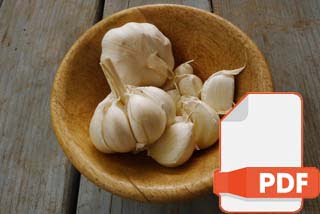Review: antimicrobial properties of allicin used alone or in combination with other medications

Download - PDF
Abstract
Garlic (Allium sativum L.) is a well-known spice widely utilised for its medicinal properties. There is an extensive record of the many beneficial health effects of garlic which can be traced back to as early as the ancient Egyptian era.
One of the most studied properties of garlic is its ability to cure certain ailments caused by infections. In the 1940s, the antimicrobial activities exhibited by garlic were first reported to be due to allicin, a volatile compound extracted from raw garlic. Since then, allicin has been widely investigated for its putative inhibitory activities against a wide range of microorganisms. Allicin has demonstrated a preference for targeting the thiol-containing proteins and/or enzymes in microorganisms. It has also demonstrated the ability to regulate several genes essential for the virulence of microorganisms. Recently, it wasreported that allicin may function better in combination with other antimicrobials compared to when used alone. When used in combination with antibiotics or antifungals, allicin enhanced the antimicrobial activities of these substances and improved the antimicrobial efficacy. Hence, it is likely that combination therapy of allicin with additional antimicrobial drug(s) could serve as a viable alternative for combating rising antimicrobial resistance.
This review focuses on the antimicrobial activities exhibited by allicin alone as well as in combination with other substances. The mechanisms of action of allicin elucidated by some of the studies are also highlighted in the present review in order to provide a comprehensive overview of this versatile bioactive compound and the mechanistic evidence supporting its potential use in antimicrobial therapy.
Source: https://pubmed.ncbi.nlm.nih.gov/32207097/

